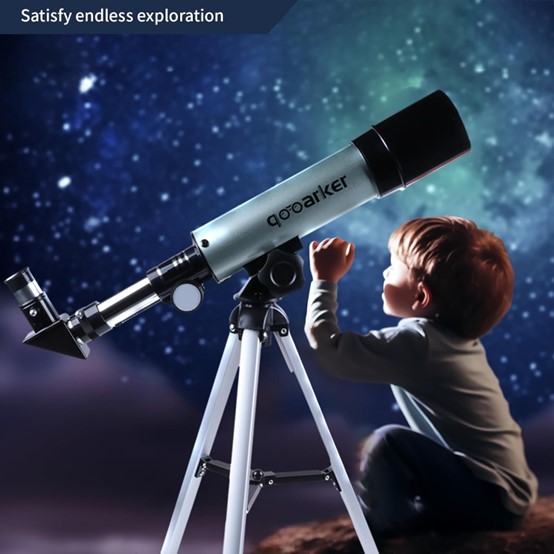The Moon, our closest celestial neighbor, holds endless fascination with its stark landscapes, craters, and seas of hardened lava. The telescope for kids offers an incredible opportunity to explore these features up close, bringing the surface of the Moon right into your backyard. In this guide, we’ll walk you through the steps to capture the breathtaking details of lunar craters, turning your stargazing sessions into an unforgettable experience.
1. Preparing for Your Moon Observation
Before you begin, it’s important to prepare for your lunar observation. Check the lunar phases—observing during a waxing or waning gibbous phase provides the best views of craters, as the shadows cast by the sun create stark contrasts that reveal the rugged surface details.
2. Setting Up Your Lunar Telescope
Proper setup of your telescope is essential for clear, detailed views. We’ll guide you through assembling your telescope, ensuring it’s stable, and aligning the finder scope to the main eyepiece. This step is crucial for easily locating and focusing on specific lunar features.
3. Choosing the Right Eyepiece
Different eyepieces offer varying levels of magnification. For observing lunar craters, start with a low to medium magnification eyepiece to get an overall view, then switch to a higher magnification to zoom in on specific areas of interest like Tycho, Copernicus, or the Sea of Tranquility.
4. Focusing on the Lunar Surface
To capture the sharpest images of lunar craters, you need to fine-tune your focus. We’ll teach you how to slowly adjust the focus knob while observing the edge of a crater, ensuring you achieve the maximum clarity and detail.
5. Identifying and Observing Key Lunar Craters
The Moon’s surface is dotted with thousands of craters, each with its own unique story. We’ll highlight some of the most famous and easily recognizable craters, like Tycho, with its prominent ray system, and Plato, known for its dark, flat floor. Learn how to locate these craters and what makes them significant in lunar geology.
6. Capturing Lunar Details with Your Camera
If you’re interested in lunar photography, the Lunar Telescope can be paired with a smartphone adapter or camera mount. We’ll provide tips on how to attach your camera, adjust settings, and capture stunning images of the Moon’s craters. Whether you’re using a smartphone or a DSLR, you’ll be able to preserve the incredible details you observe.
7. Enhancing Your Observations with Filters
Lunar filters can reduce the glare of the Moon, allowing for more comfortable viewing and enhancing surface details. We’ll discuss how to choose and use filters to bring out the contrasts in the lunar surface, making craters and mountains stand out even more.
8. Understanding the Science Behind the Craters
Finally, we’ll delve into the science behind lunar craters—how they were formed, what they tell us about the Moon’s history, and why some craters appear more prominent than others. This knowledge adds a deeper layer of appreciation to your observations.
9. Sharing Your Lunar Adventures
Once you’ve captured the beauty of the Moon’s surface, share your findings with friends, family, or online communities. We’ll suggest ways to engage with other lunar enthusiasts, exchange tips, and participate in lunar observation events.

With the Lunar Telescope, the Moon becomes not just a distant object in the sky, but a fascinating landscape ripe for exploration. By following this guide, you’ll be able to experience the thrill of discovering lunar craters up close, deepening your connection with the cosmos.
